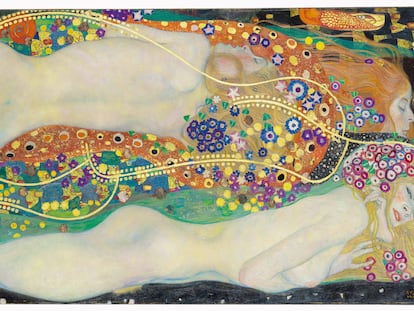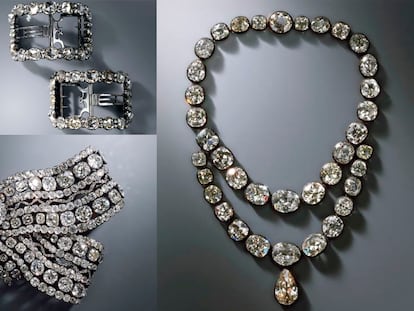Het Loo, the palace that reveals the lives of Dutch royalty, reopens to the public
Once the holiday residence of kings and queens, later a Nazi hospital in World War II, the Versailles-like site has undergone a €171 million renovation to restore its original look and showcase the history of the House of Orange
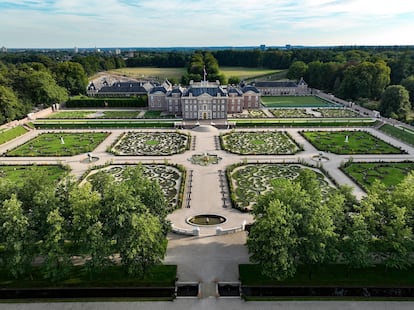

Built as a summer residence in the 17th century for Prince William and his wife, consort Princess Mary II of England, the Dutch palace of Het Loo preserves the history of the House of Orange. William was the supreme representative — the stadtholder — of the former United Provinces of the Netherlands and he ordered it to be built in the Veluwe, a central and wooded area in the town of Apeldoorn.
It is a brick building whose gardens are inspired by those of Versailles in France, and part of European history has passed through its rooms, from Louis Napoléon, imposed as king in the 19th century by his brother, then Emperor of France, to the German troops stationed there during World War II. Queen Wilhelmina, great-grandmother of the current sovereign William, considered it her home.
Now, the palace is reopening its doors after a five-year renovation that cost €171 million and has created an underground museum and returned the interior rooms to their former splendor. The monarch attended the reopening this Friday, and the doors opened to the public on Saturday.
Het Loo, which has been a national museum since 1984, means “clearing in the woods.” Removed from the political environment of The Hague, it is imposing by Dutch standards of sobriety. The changes have cost €171 million and a space of 5,000 square meters has been added under the entrance courtyard for exhibitions. Located at a depth of 10 meters, floors, walls and stairs are covered with white Macael marble brought from Spain; these lead to the permanent exhibition on the House of Orange. The Dutch princes who were stadtholders are all represented there: from William the Silent — who joined the rebellion against the Spanish Hapsburgs and was assassinated — to his successors.
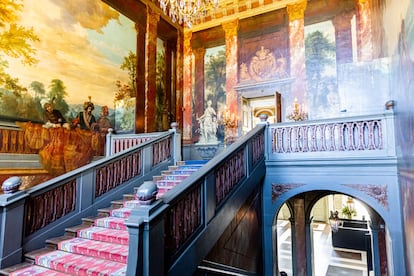
There is also information about the period under Louis Napoléon during the French invasion, his departure in 1810, and the return of William I of Orange-Nassau. Although he was supposed to remain stadtholder, he was enthroned in 1815 as the first Dutch king. “That is where the current Royal House begins, and we have tried to show its history with its lights and shadows so that visitors can draw their own conclusions. Kings and queens appear in all their splendor, but also the voices of the 17th century in favor of a republic and the colonial period,” explains Johan de Haan, senior curator of the museum.
The visit also covers the apology offered by King William during the coronavirus pandemic, when he went on vacation to Greece with his wife Queen Máxima and their three daughters. The trip unleashed criticism inside and outside Parliament. Hunting is another point of friction, as the forests of Het Loo are rich in red deer, roe deer and wild boar. Queen Wilhelmina ceded the palace “to the Dutch people” in 1959, but the Crown retains the use of it, and the king closes off part of the property during hunting season.
The new design by Kaan Architects allows light to invade an underground space that replicates the symmetry of the outer building. A staircase of the same marble leads to the interior of the palace, divided into two parts. One wing focuses on the 17th century, the period of Prince William and his wife Mary, where visitors can see the living rooms, bedrooms and even the dining room, where the monarchs could be observed by their subjects from a balustrade. “A king with an appetite and a full table heralded that all would be well,” explains Hanna Klarenbeek, curator of paintings. The other area is dedicated to Queen Wilhelmina and her daughter, Juliana, who spent a lot of time at the palace.
William III was a Protestant prince, the son of William II of Orange-Nassau and Mary Henrietta Stuart. His mother was the first English royal princess, and the story of his own marriage may not be as well remembered as that of other kings. Married to his cousin Mary, both reigned in England, Ireland and Scotland from 1689, after the so-called Glorious Revolution, a coup d’état that overthrew King James II, William’s father-in-law and the last Catholic monarch of what would become the United Kingdom. The crown was offered to the Dutchman for his defense of the Protestant cause and against absolutism, after having conspired against his wife’s father. The couple had Het Loo Palace expanded and improved to reflect their new position. It wasn’t a permanent base, but they entertained there and there was game to hunt. “The gardens were filled with fountains and exotic species, and we know from the archives what was planted in the 17th century. So we planted, among other things, daffodils and tulips and whatever existed back then,” explains Klarenbeek.
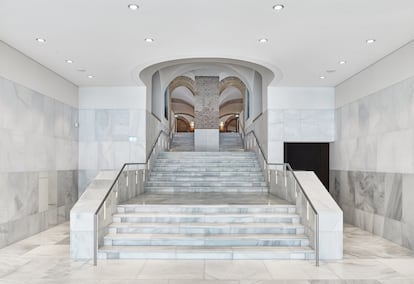
There is a series of rooms with Italian silks, tapestries, furniture of different styles and porcelain items. There is a shared chapel for the couple’s religious creeds, an intimate sitting room and an even smaller reading room, revealed to be Mary’s favorites. The couple had no children; she died in 1694, and her husband reigned alone until his death in 1702. In memory of his wife, he transformed the room that was supposed to showcase the porcelain collection into a library. His collection of paintings was sold and to fill the gallery where they hung in their day, paintings commissioned mostly by William have been sought. There are also a few museum transfers.
The other wing of the palace is dedicated to Queen Wilhelmina and her daughter, Queen Juliana, who used it as a home. Wilhelmina’s father died when she was 10 years old and her mother, Emma, decided during her regency that the princess should prepare thoroughly for the throne. The toys were put away and the little girl began to study to become the first female sovereign in the country’s history. During World War II, the Nazis confiscated Het Loo and used it as a convalescence center for 600 wounded German soldiers. Later it served as a hospital. The rooms of Queen Wilhelmina, who spent the war in London, were used by SS officers. Then, towards the end of the war, they brought in British soldiers they had taken prisoner. “The bathroom was completely redone after all that because it had been used by the occupants,” says De Haan.

Standing in front of a large bed, Klarenbeek adds: “Wilhelmina’s father died here and the girl had to sleep in this bed the following night. She was the new queen, and her mother wanted her to be in the royal bedroom from the first moment. Another room was used by Prince Bernhardt, Juliana’s husband. In it, there is a table covered with rhinoceros skin. When he was in there with his friends, they heated it from below with light bulbs. The game consisted of drinking quickly because the glasses would fall over as the skin swelled from the heat. Hunting trophies such as bears, buffalo, an elephant’s foot, a crocodile, and abundant deer antlers decorate another chamber.
There is another anecdote, very modern from the point of view of 1927. Juliana, who would succeed her mother on the throne in 1948, chose the furniture for her room from a catalogue.
Sign up for our weekly newsletter to get more English-language news coverage from EL PAÍS USA Edition
Tu suscripción se está usando en otro dispositivo
¿Quieres añadir otro usuario a tu suscripción?
Si continúas leyendo en este dispositivo, no se podrá leer en el otro.
FlechaTu suscripción se está usando en otro dispositivo y solo puedes acceder a EL PAÍS desde un dispositivo a la vez.
Si quieres compartir tu cuenta, cambia tu suscripción a la modalidad Premium, así podrás añadir otro usuario. Cada uno accederá con su propia cuenta de email, lo que os permitirá personalizar vuestra experiencia en EL PAÍS.
¿Tienes una suscripción de empresa? Accede aquí para contratar más cuentas.
En el caso de no saber quién está usando tu cuenta, te recomendamos cambiar tu contraseña aquí.
Si decides continuar compartiendo tu cuenta, este mensaje se mostrará en tu dispositivo y en el de la otra persona que está usando tu cuenta de forma indefinida, afectando a tu experiencia de lectura. Puedes consultar aquí los términos y condiciones de la suscripción digital.
More information
Últimas noticias
Maduro counterattacks Trump with rhetoric and announces downing of nine drug trafficking aircraft
‘Ecce Homo’: The miraculous disaster that made a small Spanish town famous
Return to sex testing at the Olympics: IOC edges closer to banning transgender women
Trump escalates conflict with Venezuela with the start of covert operations
Most viewed
- Sinaloa Cartel war is taking its toll on Los Chapitos
- Oona Chaplin: ‘I told James Cameron that I was living in a treehouse and starting a permaculture project with a friend’
- Reinhard Genzel, Nobel laureate in physics: ‘One-minute videos will never give you the truth’
- Why the price of coffee has skyrocketed: from Brazilian plantations to specialty coffee houses
- Silver prices are going crazy: This is what’s fueling the rally
